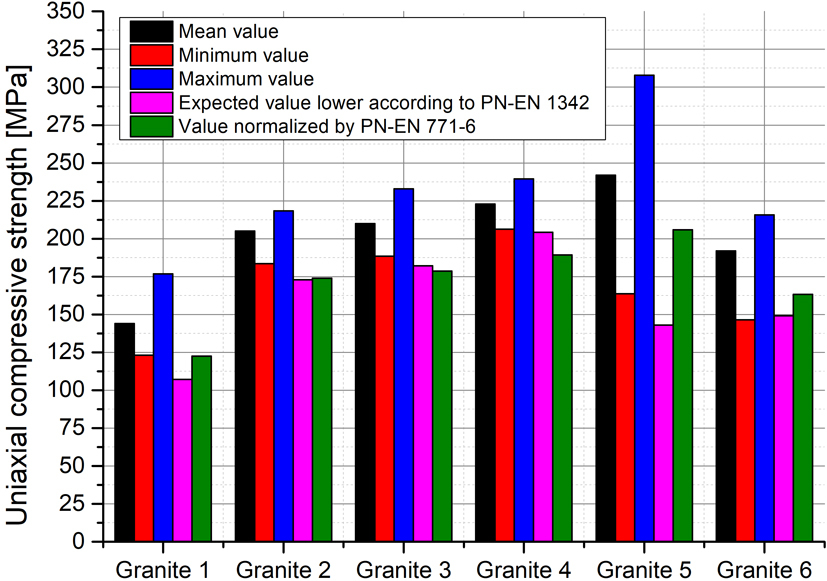The comparison of the compressive strength of rock in view of requirements according to selected civil engineering standards
1
Faculty of Civil Engineering and Resource Management, AGH University of Krakow, Poland
These authors had equal contribution to this work
Submission date: 2024-04-08
Final revision date: 2024-09-04
Acceptance date: 2024-09-10
Publication date: 2025-09-16
Corresponding author
Joanna Hydzik-Wiśniewska
Faculty of Civil Engineering and Resource Management, AGH University of Krakow, Al. Mickiewicza 30, 30-059, Kraków, Poland
Faculty of Civil Engineering and Resource Management, AGH University of Krakow, Al. Mickiewicza 30, 30-059, Kraków, Poland
Archives of Civil Engineering 2025;71(3):165-179
KEYWORDS
compressive strengthstandard requirementsstone materialslower expected valuenormalised valueresistance to breakage
TOPICS
ABSTRACT
This study is aimed at analysing the requirements for compressive strength values of rocks used in the universally understood construction industry as stone materials. The compressive strength value obtained in laboratory tests may prove significantly different from the actual compressive strength of a given rock, depending on its application. According to PN-EN 1342:2013, lower expected value must be declared for paving block stone, normalised value for wall components, as per PN-EN 1996-1-1:2023 and PN-EN 771-6:2015, while with respect to stone for hydrotechnical works – structural integrity acc. to PN-EN 13383-1:2003. Despite testing samples in the same manner, e.g. acc. to PN-EN 1926:2007, all these parameters differ with the declared value and, in many cases, significantly differ from the most frequently used average compressive strength value. The analysis involved the results of compressive strength tests performed as per PN-EN 1926:2007, for samples of sandstone, granite, and limestone. The tests were performed for the aforementioned rocks in the air-dry condition, after saturation, and after the frost resistance test. On average, for all rock types, the lower expected value vs. average value was lower: in the air-dry condition by 25%, after saturation by 29%, and after frost resistance test by 37%. Furthermore, in most analysed cases, lower expected value did not exceed minimum compressive strength value. Normalised value in the air-dry condition was by approximately 15% lower than the average value, while after saturation totalled from 10% to 25%, depending on rock type.
Share
RELATED ARTICLE
We process personal data collected when visiting the website. The function of obtaining information about users and their behavior is carried out by voluntarily entered information in forms and saving cookies in end devices. Data, including cookies, are used to provide services, improve the user experience and to analyze the traffic in accordance with the Privacy policy. Data are also collected and processed by Google Analytics tool (more).
You can change cookies settings in your browser. Restricted use of cookies in the browser configuration may affect some functionalities of the website.
You can change cookies settings in your browser. Restricted use of cookies in the browser configuration may affect some functionalities of the website.




